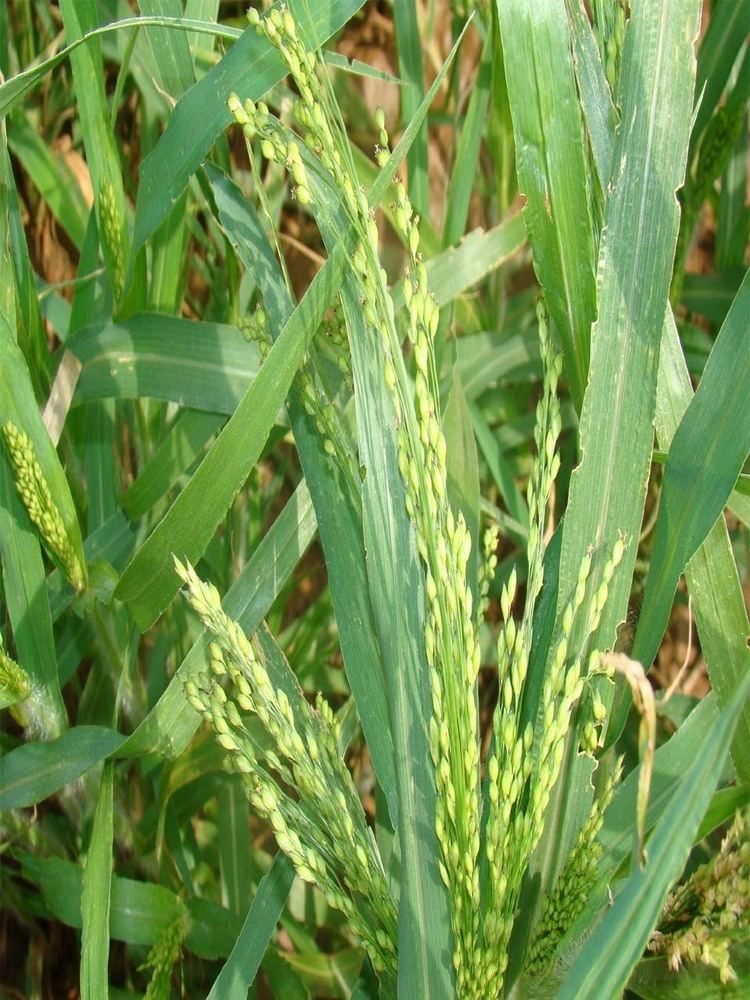Protein 7.7 g (per 100 g) Higher classification Panicgrass | Genus Panicum Energy 341 Calories (per 100 g) Iron 9.3 mg (per 100 g) Rank Species | |
 | ||
Similar Paspalum scrobiculatum, Panicgrass, Pearl millet, Finger millet, Grasses | ||
Panicum sumatrense, known as little millet, is a species of millet in the family Poaceae.
Contents
Description
This species of cereal is similar in habit to the proso millet except that it is smaller. It is an annual herbaceous plant, which grows straight or with folded blades to a height of 30 cm to 1 m. The leaves are linear, with the sometimes hairy laminae and membranous hairy ligules. The panicles are from 4 to 15 cm in length with 2 to 3.5 mm long awn. The grain is round and smooth, 1.8 to 1.9 mm long.
Subspecies
There have been two subspecies described:
Distribution and habitat
In the temperate zones of Asia: the Caucasus, China, East Asia and also in the tropics of the continent: India, Indochina and Malaysia.
It can withstand both drought and waterlogging. It can be cultivated up to 2000 m above sea level.
Common names
Hindi: Moraiyo, Kutki, Shavan.
Bengali : Sama.
Tamil : Samai.
Gujarati : Gajro, Kuri.
Telugu : Samalu.
Marathi : Sava, Halvi, Vari.
Oriya : Suan.
Kannada : Saame.
Cultivation
The largest cultivation is in central India. Usually, it is planted using a seed drill. It can also if necessary be planted spoiled. The green plant can also be used in part as cattle feed. The straw can be mixed with clay or cement be used in construction.
The harvest yield is from 230 to 900 kg/ha.
Archaeobotany
At the Indus Valley Civilisation sites of Harappa and Farmana, the millet assemblage was dominated by little millet. Over 10,000 grains of little millet were recovered at Harappa. At Harappa, little millet cultivation peaked at around 2600 BC, accounting for around 5% of the total cereal assemblage.
Preparation
Little Millet is cooked like rice. Sometimes the millet is also milled and baked. The protein content of the grain is 7.7%.
